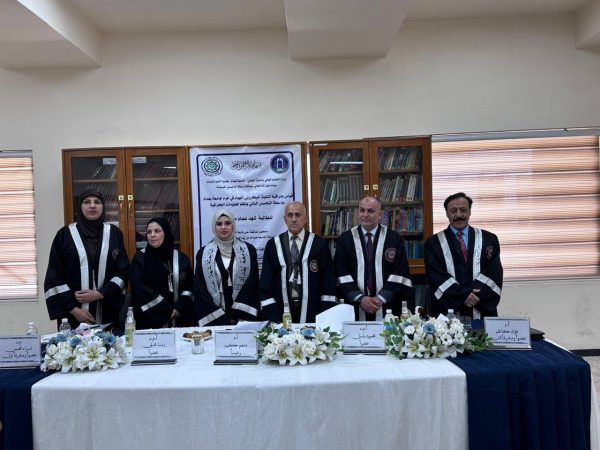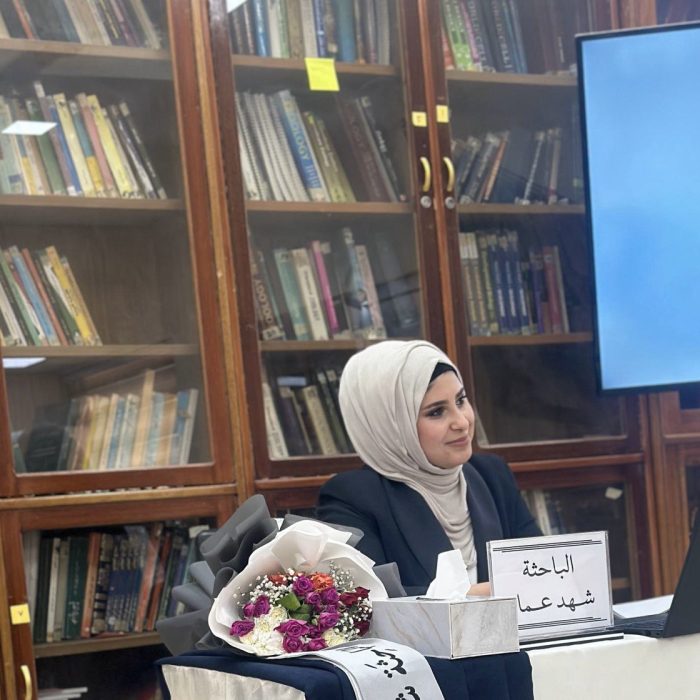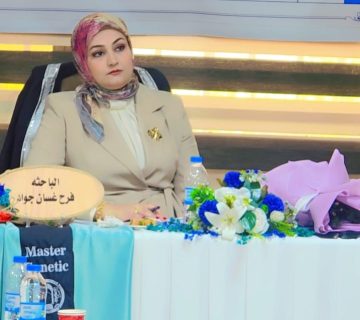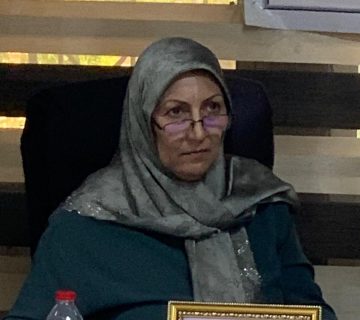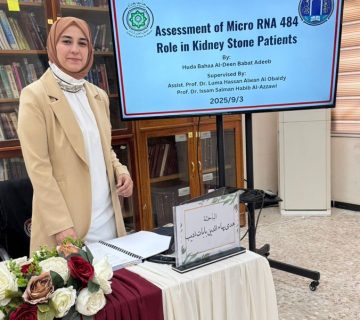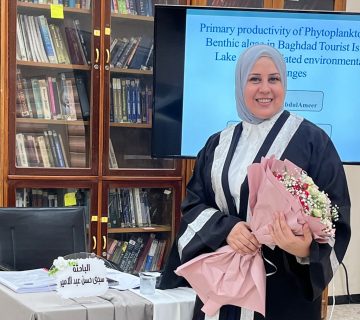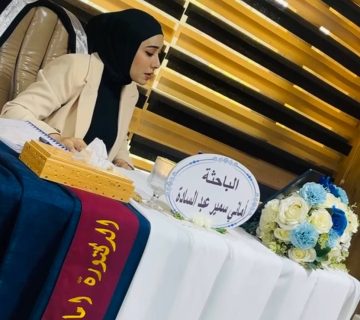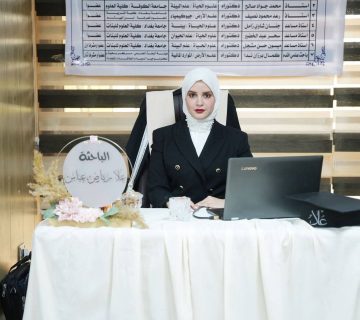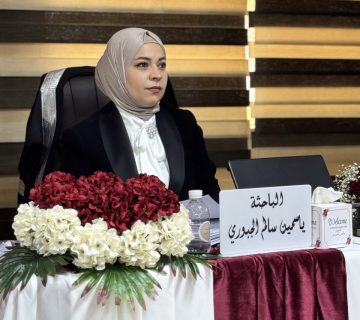Master Discussion
College of Science for Women / University of Baghdad examined the thesis (Measurement and Monitoring of Air Bacterial Contamination within the University of Baghdad in Al –Jadria Campus by Using GIS Techniques) of the student Shahad Emad Muhaisen.
The thesis aimed to evaluate airborne microbial pollution within the University of Baghdad campus – Al-Jadriya Complex by measuring bacterial concentrations in the air and investigating their correlations with environmental factors, including temperature, relative humidity, and particulate matter (PM2.5 and PM10). Air samples were collected from ten different sites across the campus from December 2023 to June 2024, covering both wet and dry months.
The study focused on three main approaches: Firstly, measuring environmental variables using a portable CEM device and GPS to determine sampling locations. Secondly, applying GIS techniques to generate spatial distribution maps and identify hotspots, along with employing remote sensing (RS) techniques to compare ground data with satellite observations. Thirdly, performing molecular identification of airborne bacterial isolates using the 16S rRNA gene.
The most important recommendations which the study has come up:
- Particulate matter concentrations (PM2.5 and PM10) exceeded the permissible limits according to the national air quality standards in Iraq, particularly during the wet months.
- Airborne bacterial counts within the campus surpassed the global levels reported by the European Commission for air quality.
- The highest bacterial concentration during wet months was recorded at site S5 (College of Engineering – Al-Khwarizmi), while during dry months the highest concentration appeared at site S2 (College of Media).
- Site S6 (College of Science) exhibited the highest bacterial diversity, indicating a richer and more complex microbial environment.
- Molecular identification of airborne bacteria included 12 isolates: Neobacillus drentensis, Priestia endophytica, Arthrobacter luteolus, Exiguobacterium sp., Exiguobacterium mexicanum, Moraxella osloensis, Enterobacter ludwigii, Peribacillus simplex, Priestia aryabhattai, Priestia megaterium, Chryseomicrobium amylolyticum.
- Isolation and molecular analysis revealed remarkable microbial diversity, with several species documented for the first time in Iraq from outdoor air, while others had been previously identified from non-airborne environments. All genetic sequences of the isolates were registered in the NCBI database under the names of the student and her supervisor.
Excellent grade.
